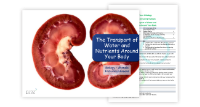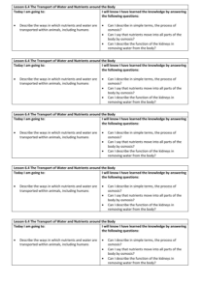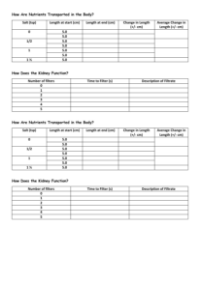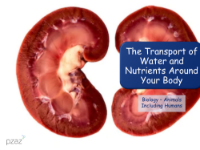The Transport of Water and Nutrients - Teacher Explanation

Science Resource Description
Welcome to lesson 6.4 on the Transport of Water and Nutrients, a key topic in the Year 6 unit on animals, including humans. In this lesson, we delve into the National Curriculum's requirement for pupils to understand how nutrients and water are transported within animals and humans. Pupils will engage in practical activities involving liquids and food, hence it is crucial to maintain health and safety standards by promptly cleaning up any spillages to prevent slips and ensuring that food used in experiments is not consumed. After completing the activities, thorough handwashing is mandatory. The lesson also offers cross-curricular opportunities, with pupils applying mathematical skills in calculations and Design and Technology skills in creating a working kidney model.
The lesson begins with an exploration of how nutrients reach every cell in the body through a process known as osmosis. Although the detailed study of osmosis is reserved for Key Stage 3, it is sufficient for pupils to grasp that nutrients can move from areas of high concentration in the bloodstream to areas of lower concentration within cells. The practical component of the lesson involves using household items such as metal knives, teaspoons, salt, potatoes, and measuring cylinders to set up an experiment that demonstrates this principle. Additionally, pupils will engage in a hands-on activity to design and construct a model of a kidney, enhancing their understanding of the urinary system's structure and function. Through these activities, pupils will not only learn about the biological processes but also develop critical thinking and evaluation skills by considering the effectiveness of their models and proposing improvements.






